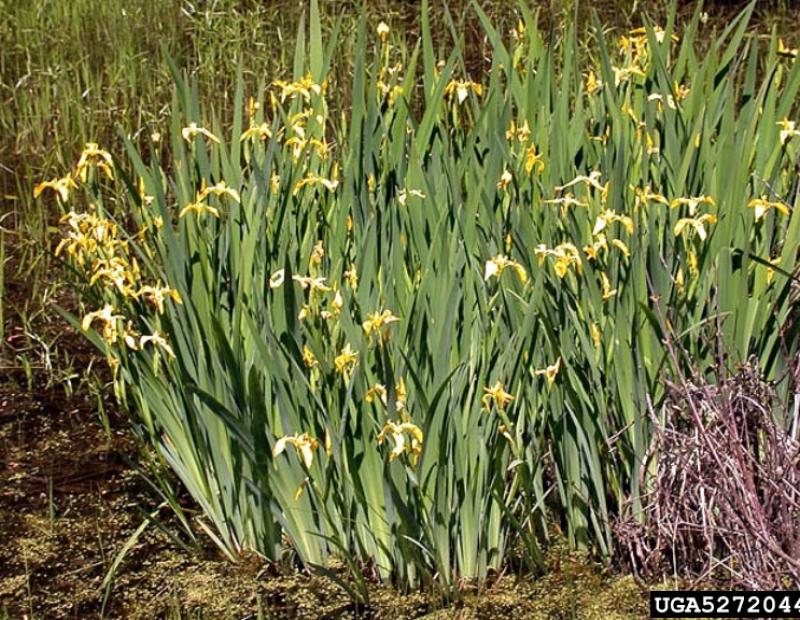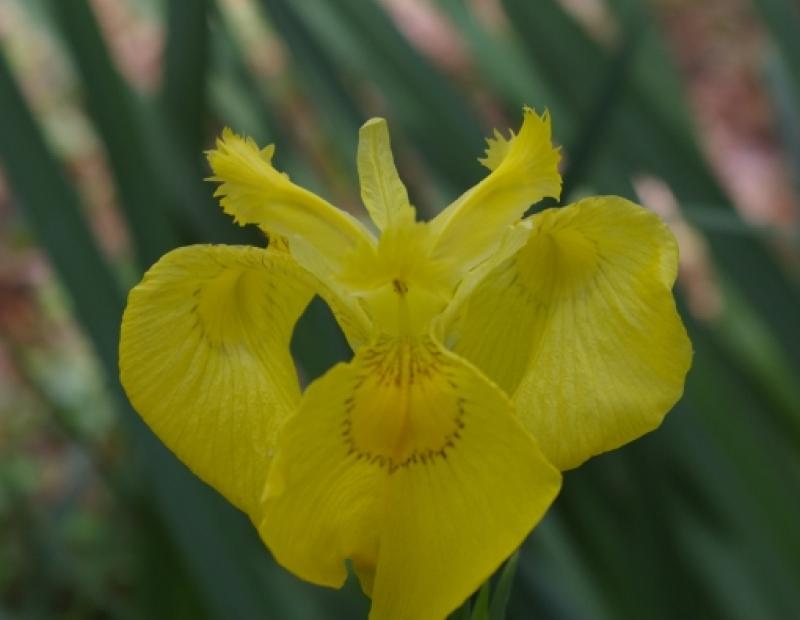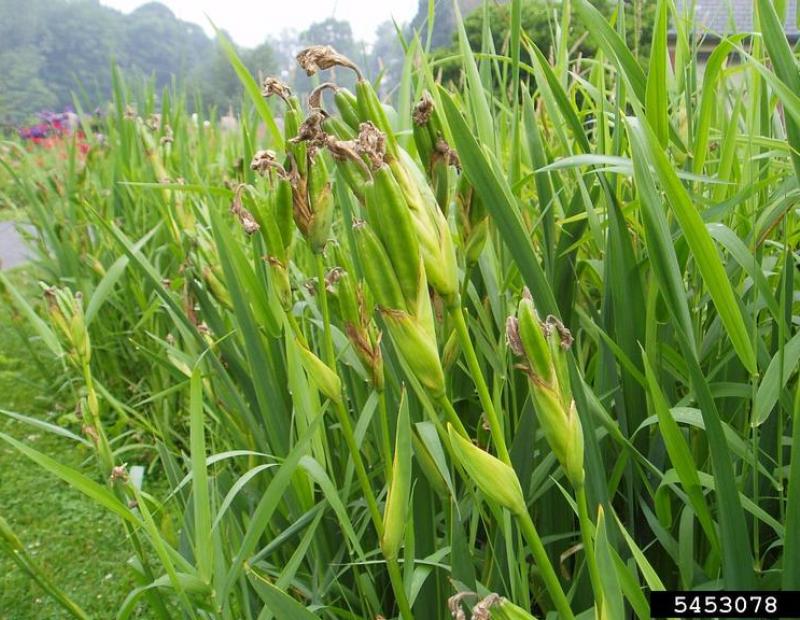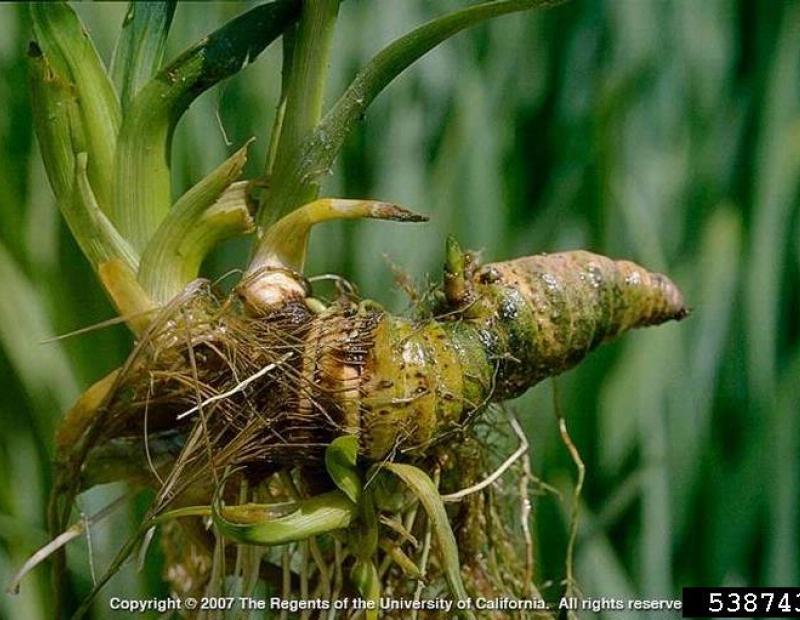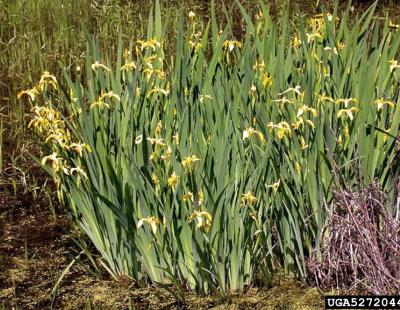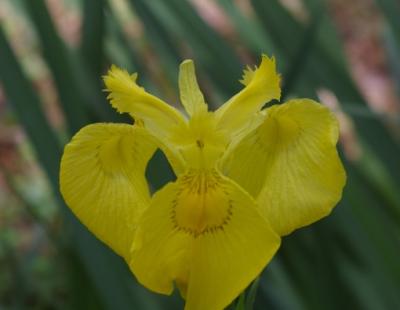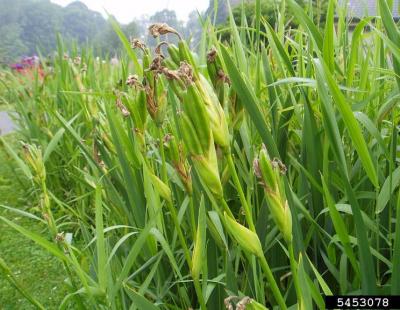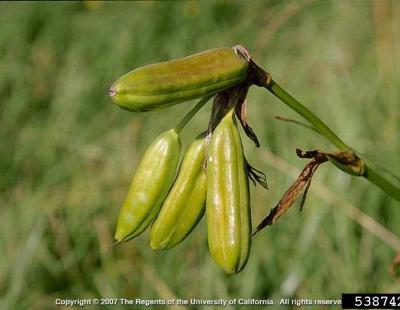- Terrestrial Plants
- Other Herbaceous
Iris pseudacorus are very competitive against native plants due to their ability to form dense colonies and impenetrable thickets, ultimately displacing the native plants, and reducing habitat availability for animals as a result. Thriving in wetlands, their buoyant seeds are spread over long distances by water. All parts of the plant are poisonous to livestock and other animals. The rhizomes of the plants can survive harsh droughts, allowing for survival through dry conditions. The roots of the iris create a mat which compacts soil and prevents seed germination of native plants like cattails and native irises.
Yellow iris is native to Europe and the British Isles, Western Asia, North Africa, and the Mediterranean region. It was first introduced to the United States in the 1800's as an ornamental plant for its attractiveness. It has also been widely planted for erosion control and also to remediate sewage treatment plants due to its ability to remove nutrients and trap sediments. Since its introduction, the yellow iris has invaded wetlands and other semi-aquatic and aquatic habitats and is widespread in the Lower Hudson Valley. One of the first records of the escaped plant was found in the Hudson River Basin, near Poughkeepsie in 1868. Since this time, it has spread vastly along waterways and throughout a majority of the United States.
Yellow iris an herbaceous perennial that grows between 3 and 4 ft. in height. The sword-shaped, broad leaves are 1.5-3 ft. long with a central ridge on both sides of the blades. Beginning in its third year of growth, the plant produces several white to cream to yellow flowers in groups on each stem that bloom from April to June. The flowers are pollinated by bees and long-tongued flies. Seed production occurs from August through October. Fruits are 6-angled, egg-shaped, and contain around 120 white seeds that later turn brown.
The yellow iris can thrive in a large range of environmental conditions. It can grow in wetlands, shorelines, streambanks, rocky shores, floodplain forests, ditches, and areas with shallow water. They can grow in fresh or brackish water, and often reside in habitats that have low oxygen. Yellow iris can tolerate areas that have high soil acidity. Their greatest limiting factor for best growth is that the yellow iris requires high levels of nitrogen in the soil. The yellow iris is widespread through the Lower Hudson region and is a prohibited plant in New York state and may not be sold, imported, purchased, introduced or propagated throughout the state.

